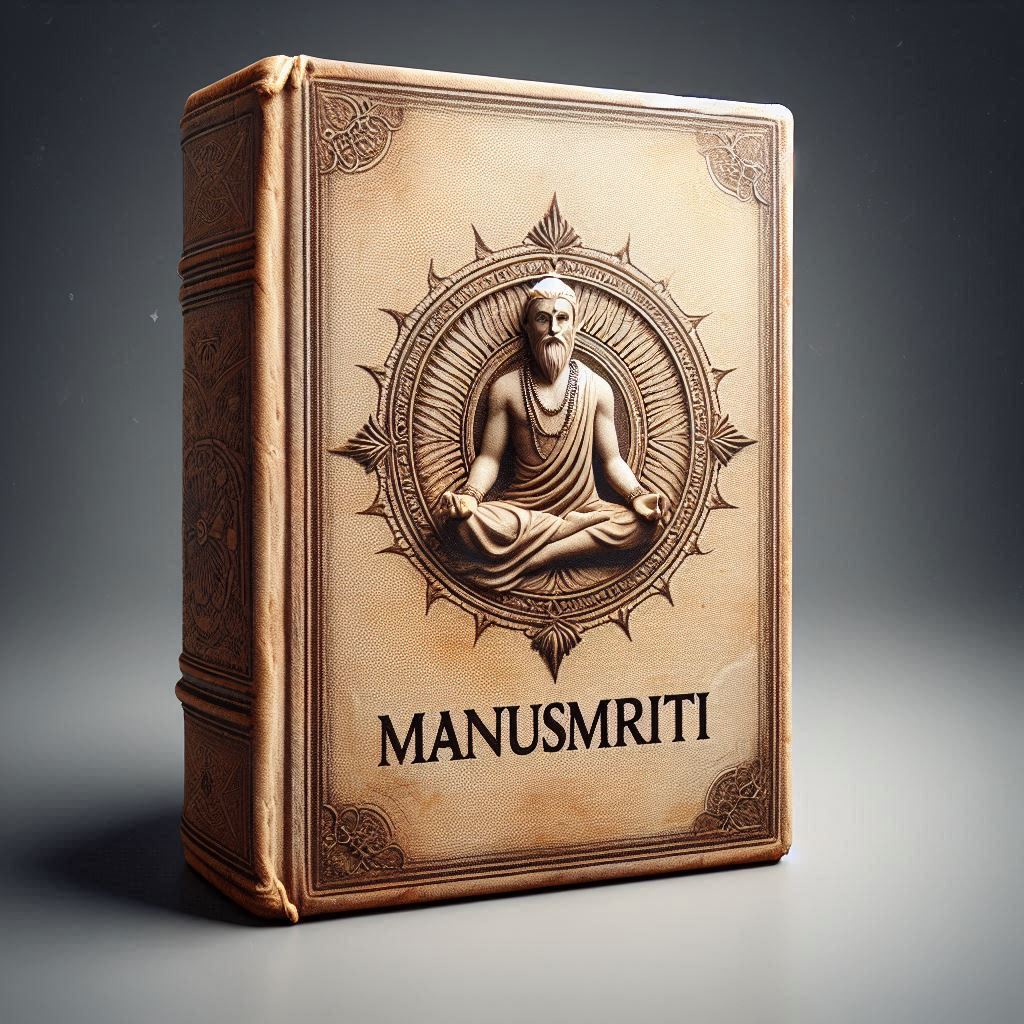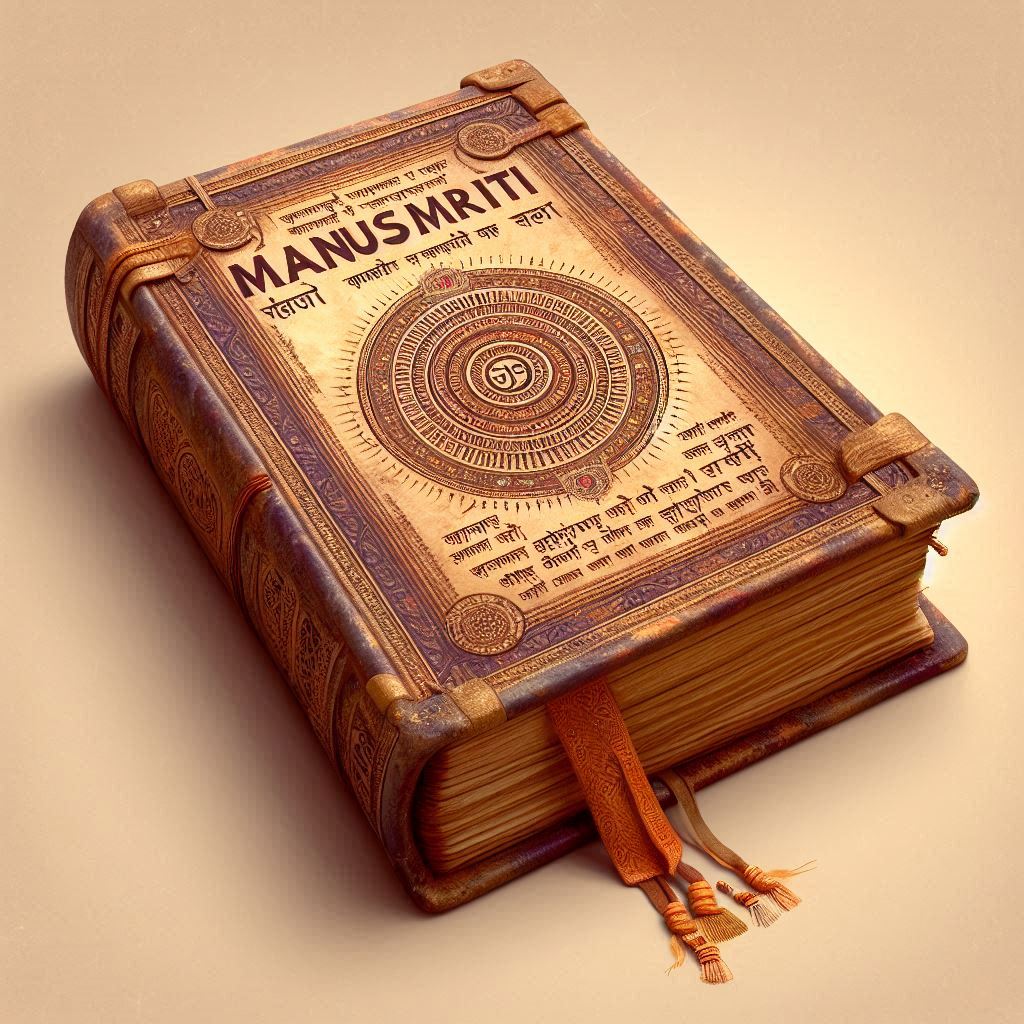Manusmriti is most commonly known and referred to as the Manusmriti or the Laws of Manu and is one of the most essential in Hindu law and philosophy. Written between 200 BCE and 200 CE, it gives an elaborate account of the dharma – the concept of duty or righteousness – and the principles of social and legal.rights, morality, and law. This considerable work has played a role in shaping the social and legal systems that are in core of Indian society since prehistoric period.
Historical Context and Origins of Manusmriti
It is proposed that Manusmriti has been written during the period of transitional changes in the history of India, when it shifted from a Vedic phase to a certain legal and social code. It is said to have been written by Manu, who is a figure in ancient Indian mythology as the first human being and a writer of law. Nevertheless, its author and the historical period of its writing remain the object of discussion among scholars.
At the time when the novel was written the society was changing rapidly and it is clearly reflected in its work. Kingdoms’ consolidation, the emergence of the settled agricultural economy and the formation of societal rank and differentiation led to the need for the regulation of rights and moral behavior. Thus, Manu Smriti came to be as a reaction to these societal changes and offered an ordered pattern to govern the society and uphold justice.
Structure and Composition of Manusmriti
Manusmriti is meticulously structured into twelve chapters, comprising around 2,685 verses. These chapters cover various aspects of life, from personal conduct to the duties of different social classes. The text is written in classical Sanskrit, utilizing both poetic and prose forms, making it a unique blend of legal code and literary work.
1.Dharma and Social Order
Varnashrama Dharma: The text elaborates on the four varnas (social classes) – Brahmins, Kshatriyas, Vaishyas, and Shudras, and the four ashramas (stages of life) – Brahmacharya (student life), Grihastha (householder life), Vanaprastha (hermit life), and Sannyasa (renunciate life). Each class and stage of life has specific duties and responsibilities, emphasizing the importance of dharma in maintaining social harmony.
Duties and Responsibilities: The concept of dharma is central to Manusmriti. It provides detailed guidelines for the conduct expected from individuals based on their varna and ashrama. These guidelines are intended to ensure that each person contributes to the overall well-being of society. For instance, Brahmins are entrusted with the responsibility of teaching and maintaining spiritual knowledge, while Kshatriyas are tasked with protection and governance.
2.Law and Justice
Legal Principles: Manusmriti outlines various legal principles, sources of law, and judicial procedures. It categorizes crimes and prescribes corresponding punishments, aiming to maintain order and justice. The text emphasizes the importance of impartiality and fairness in the administration of justice, highlighting the role of the king as the ultimate arbiter.
Judicial Process: The judicial process described in Manusmriti is detailed and methodical. It includes procedures for trials, the presentation of evidence, and the role of witnesses. The text also addresses the importance of moral character and the integrity of judges. Specific guidelines are provided for dealing with various offenses, from theft and assault to more serious crimes like murder.
3.Ethics and Morality
Moral Philosophy: The text provides a comprehensive guide to personal conduct, emphasizing virtues like honesty, non-violence, and self-discipline. It stresses the importance of living a virtuous life in accordance with dharma, highlighting the consequences of immoral behavior.
Social Ethics: Manusmriti also addresses social responsibilities, including duties to family, society, and the environment. It outlines the principles of hospitality, charity, and respect for elders. The text emphasizes the interconnectedness of individuals and the collective responsibility to uphold moral and ethical standards.
4.Rituals and Ceremonies
Importance of Rituals: Rituals play a vital role in daily life and religious practices, with detailed descriptions of various ceremonies, from birth to death. Manusmriti provides guidelines for conducting rituals to ensure they are performed correctly and with proper reverence.
Life Cycle Rituals: Specific rituals for different stages of life, including initiation, marriage, and funerals, are elaborately described. These rituals are seen as essential for maintaining the spiritual and social order. The text also includes detailed instructions for various Vedic sacrifices and ceremonies, highlighting their significance in achieving spiritual merit.
- Economy and Statecraft
Economic Principles: Manusmriti discusses wealth generation, trade, and commerce, providing guidelines for ethical economic practices. It emphasizes the importance of honesty and fairness in financial transactions and business dealings.
Governance: The text outlines the duties of kings and administrators, focusing on good governance, military strategies, and diplomatic relations. It provides detailed instructions for the management of the state, including taxation, the welfare of subjects, and the protection of the kingdom. The role of the king is seen as crucial in maintaining dharma and ensuring justice.

Interpretations and Criticisms of Manusmriti
Manusmriti remains one of the most commented on and interpreted classical works spanning hundreds of years. Acharyas such as Medhatithi, Kulluka and Narada have given detailed explanation about this scripture. Through these commentaries, the principles of Manusmriti have been well understood and applied in social life.
In the contemporary world, Manusmriti has been criticized, particularly in the context of caste and gender systems. Critics from the Feminist and Social perspective have criticized that certain verses incite patriarchal as well as caste prejudice. These criticisms have led to discussions regarding applicability and the role of Manusmriti in modern society.
Manusmriti in the Modern World
Despite its controversies, Manusmriti’s influence on Indian legal and social systems is undeniable. Many of its principles have found their way into modern Indian law, particularly in personal and family laws. The text continues to be a reference point in legal and philosophical discussions.
1.Legacy and Influence: Manusmriti’s impact on Indian society and culture is profound, shaping social norms, legal practices, and ethical standards. The principles of dharma, as outlined in Manusmriti, continue to resonate in various aspects of life.
Judicial Influence: Modern Indian law, particularly in areas of personal and family law, reflects many principles from Manusmriti. Issues related to marriage, inheritance, and family disputes often draw upon the guidelines provided in the text.
Cultural Relevance: The text remains a significant part of Hindu tradition, with many verses still recited in religious and cultural ceremonies. It serves as a repository of ancient wisdom, offering insights into the moral and ethical foundations of Hindu society.
2.Contemporary Relevance: In contemporary society, Manusmriti’s teachings are reinterpreted to align with modern values of equality and justice. Scholars and practitioners strive to find a balance between traditional wisdom and contemporary ethical standards.
Educational Importance: The text is studied in academic circles for its historical, legal, and philosophical insights. It offers a window into the ancient Indian worldview and the evolution of social and legal norms.
Cultural Discussions: Debates on Manusmriti’s relevance continue, with efforts to understand its context and adapt its teachings to contemporary times. These discussions often focus on finding ways to harmonize the text’s principles with modern human rights and social justice values.
As a collection of law, ethical guidelines and principles of conduct, Manusmriti is a noteworthy text in Indian humanities. Although there is controversy concerning the nature of some of the tenets it espouses, there is no question that it had a profound impact on the legal and the social systems of India. This paper has attempted to understand Manusmriti as a social document that provides historical background to the development of Hindu law and helps to discover the ancient Hindu legal norms in the formation of modern Indian society.
Finally, Manusmriti offers a vastly enhanced way to explore the wisdom of ancient India to discern the many and layered strands, thereby also revealing more about the manner in which conduct and governance of human relations were facilitated for so many centuries. It not only makes the readers remember how the world was, but also makes the readers have the chances to think about how the world should be according to the principles of justice, ethic and social responsibility.



